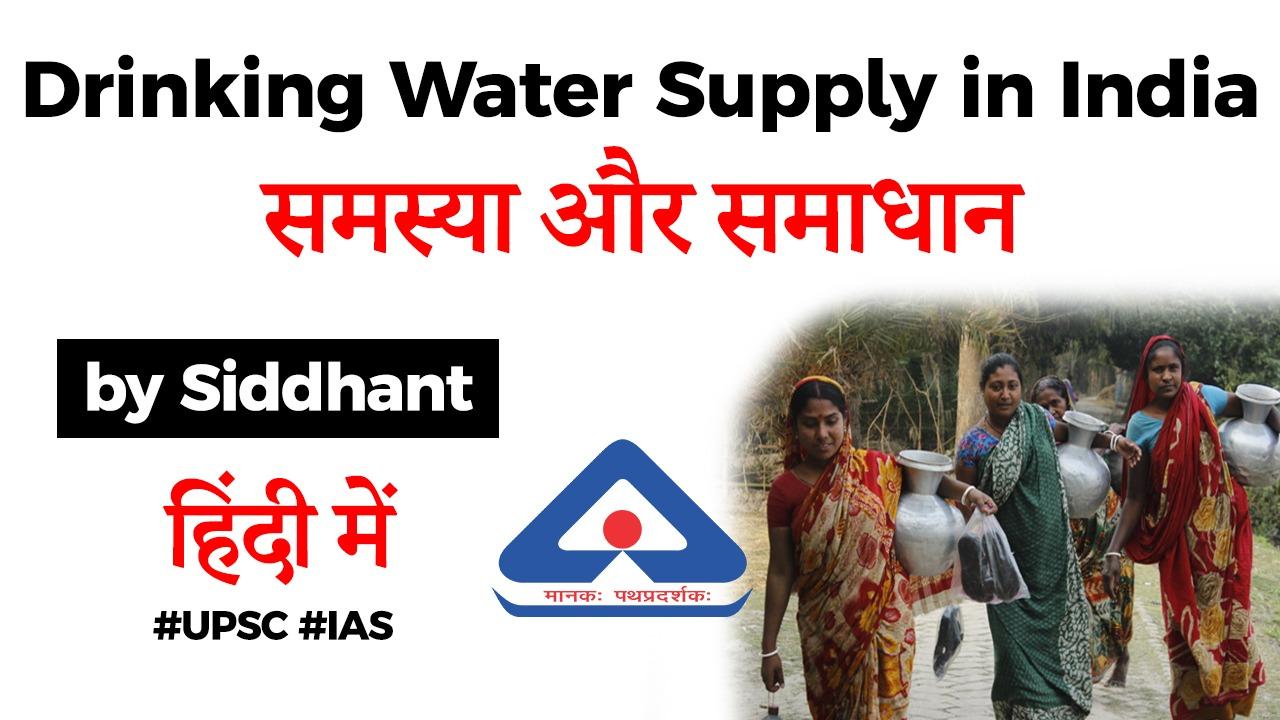Table of Contents
BIS
- The Bureau of Indian Standards (BIS) has prepared a draft standard for the supply system of piped drinking water and has invited comments from water utilities, including the Delhi Jal Board (DJB), on it.
- Labelled ‘Drinking water supply quality management system — requirements for piped drinking water supply service’, the draft has been prepared by the BIS’ Public Drinking Water Supply Services Sectional Committee.
BIS
- The standard holds importance as it is expected to make the process of piped water supply more uniform, especially in rural and underdeveloped areas of the country where the system runs on various government orders and circulars.
- At present the standard is not expected to be made mandatory, BIS officials said. After the draft is notified, states or water utilities planning to implement the standard can approach BIS for a license.
What does the draft say?
- The draft outlines the requirements for a water supplier or a water utility on how they should establish, operate, maintain and improve their piped drinking water supply service.
- The process begins with identification of a water source, which can either be groundwater or surface water sources such as rivers, streams or reservoirs.
DRAFT
- It doesn’t mention how water utilities should treat the water, but states that the process should be planned in such a manner that after treatment the drinking water should conform to the Indian Standard (IS) 10500 developed by the BIS.
- The IS 10500 outlines the acceptable limit of various substances in drinking water, including heavy metals such as arsenic, and other parameters like the pH value of water, its turbidity, the total dissolved solids in it, and the colour and odour.
What is the water supply process?
- The draft standard also contains guidelines for top management of the water utility, in terms of accountability and customer focus, establishing a quality policy for their service, monitoring the quality of water released to people, and conducting a water audit.
- The supply system as outlined in the draft should begin with the identification of a raw water source. Water should then be pumped into the treatment plant and treated to achieve the acceptable drinking standards.
What is the water supply process?
- After the water is released from the plant, there should be reservoirs in the distribution system for storage of this water, and disinfection facilities to get rid of contamination at any stage of distribution.
- “Pumping stations or boosters, if necessary, should be provided to maintain adequate pressure throughout the distribution system. Valves and meters and other appurtenances shall be installed throughout the distribution system as control devices and for water audit. Emphasis should be given to operate the systems on automation mode,” the draft reads.
What is the water supply process?
- The draft also mentions that water should be sampled at the treatment plant every four hours against quality parameters.
- In the distribution system, the sampling should be done every eight hours at the water reservoirs. Random sampling should also be done at household levels.
What’s there in the draft in addition to the water supply process?
- There are guidelines on water audit, which is a calculation of the amount of water put into distribution against the amount that is consumed. The draft states that a water audit should be conducted on a quarterly basis.
- “Effort should be made by the water agency to bring down the water loss up to 15% of the total water supplied in the system,” the document reads. The water utilities are also required to conduct surveys among consumers and obtain feedback on their service as per the draft.
Latest Burning Issues | Free PDF






















 WhatsApp
WhatsApp